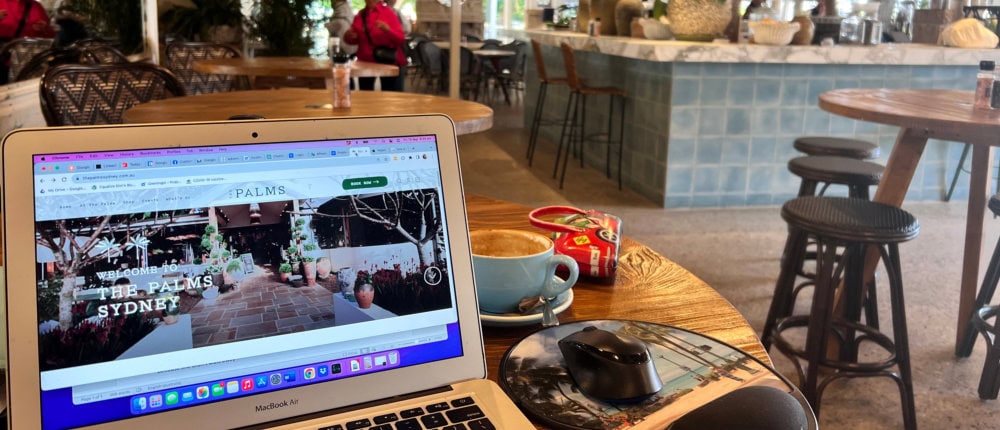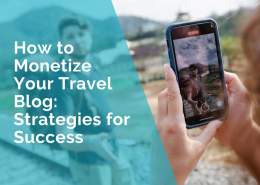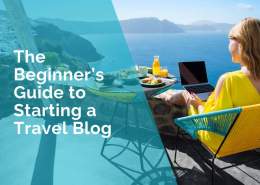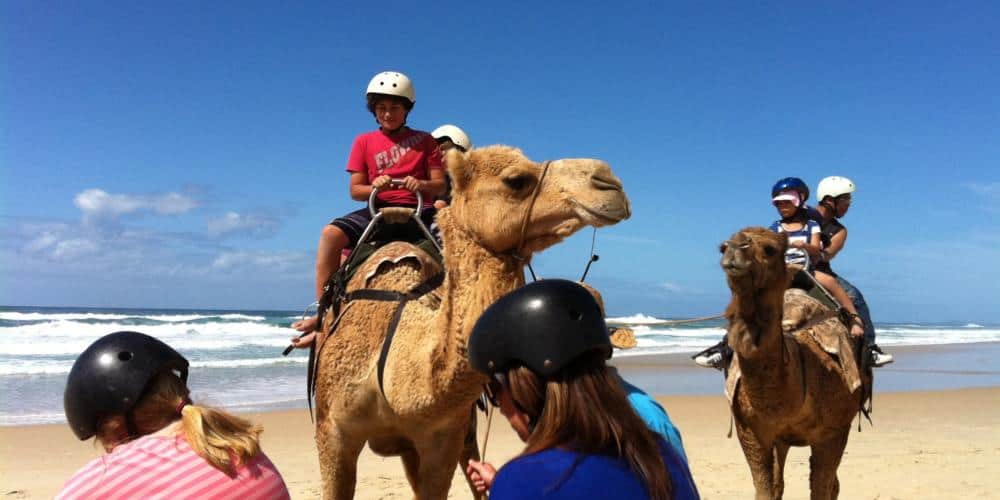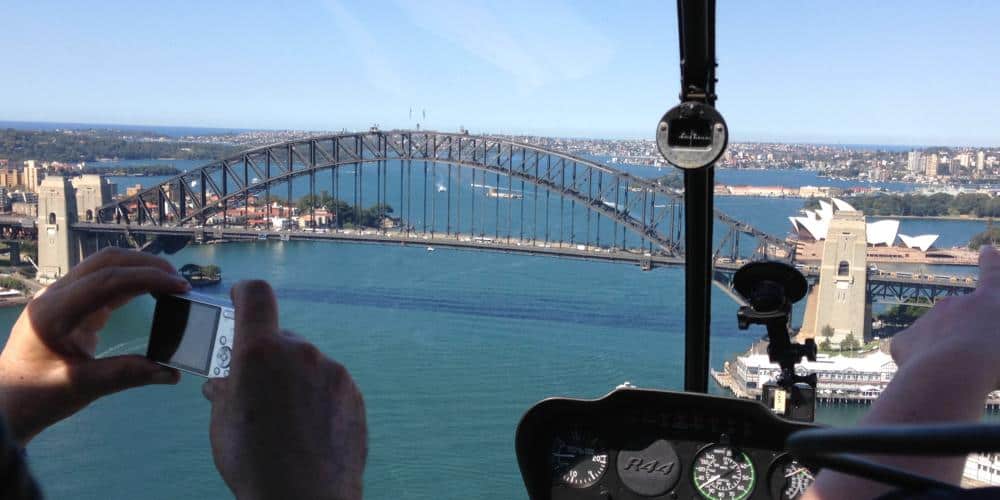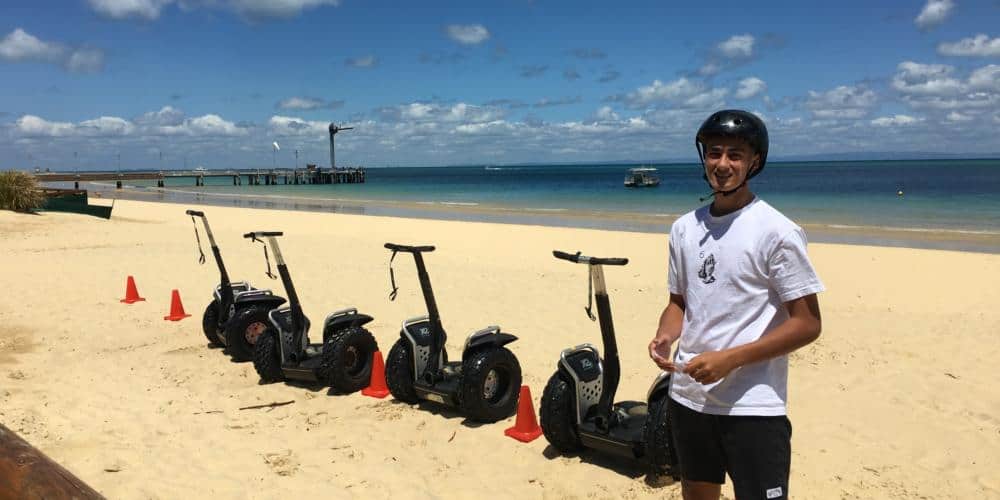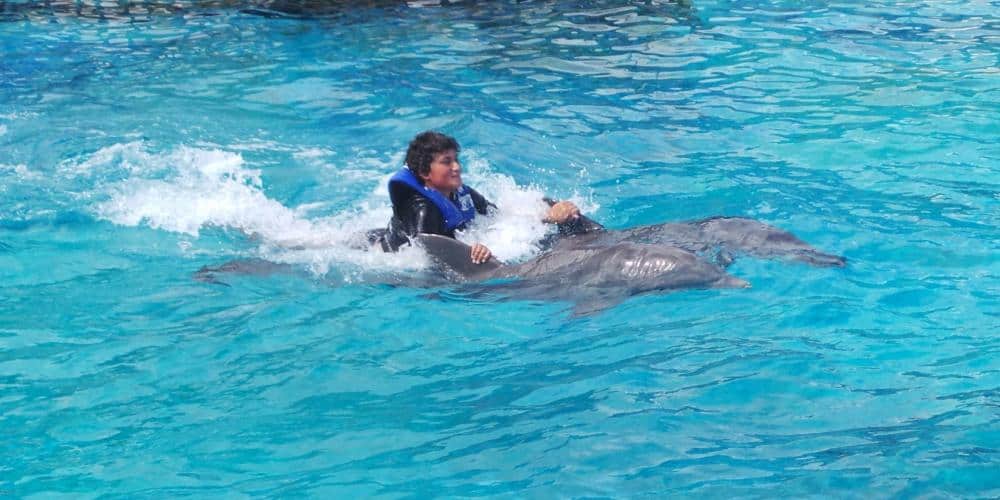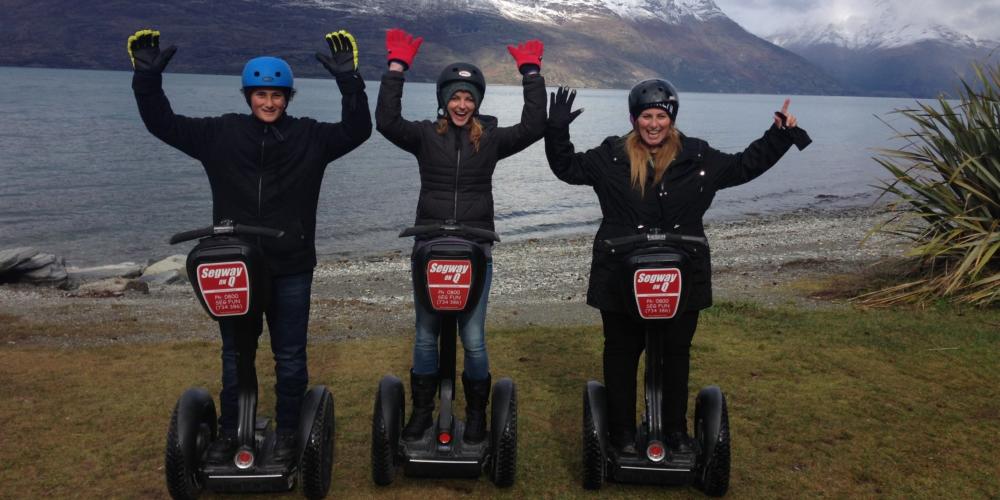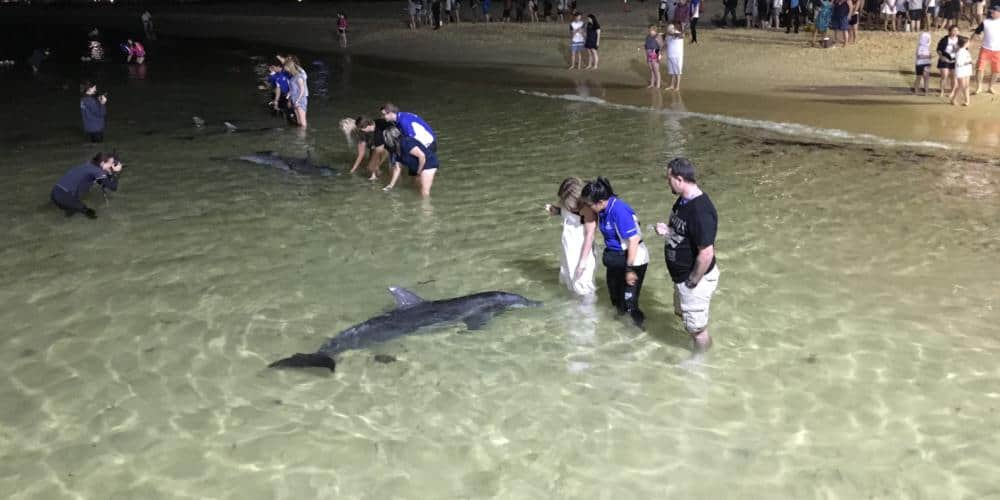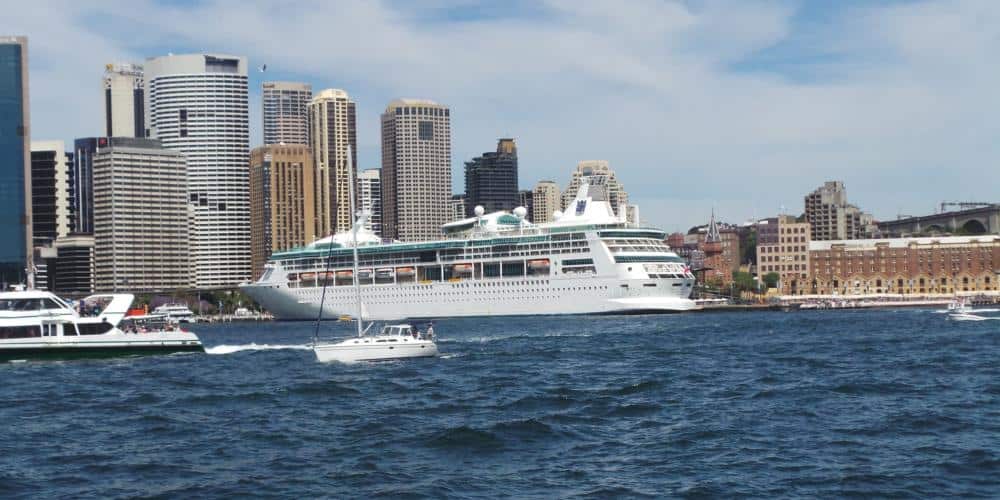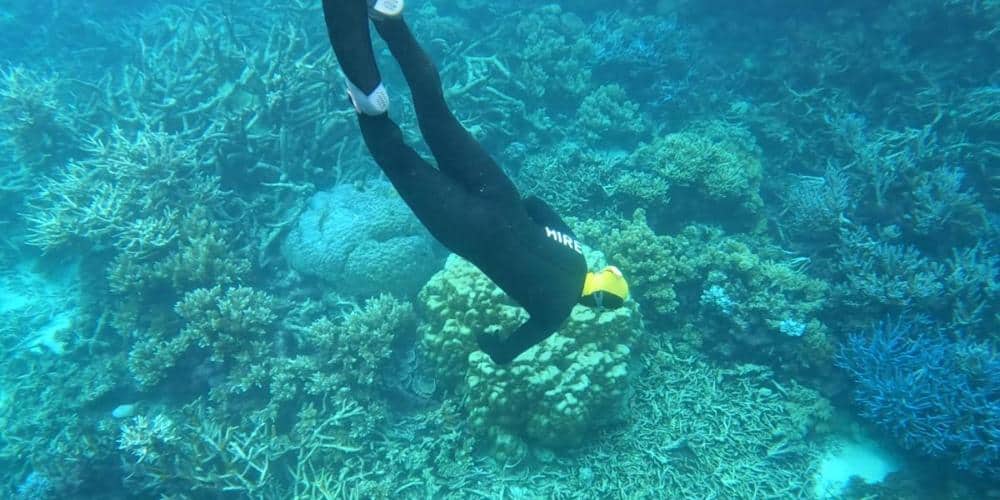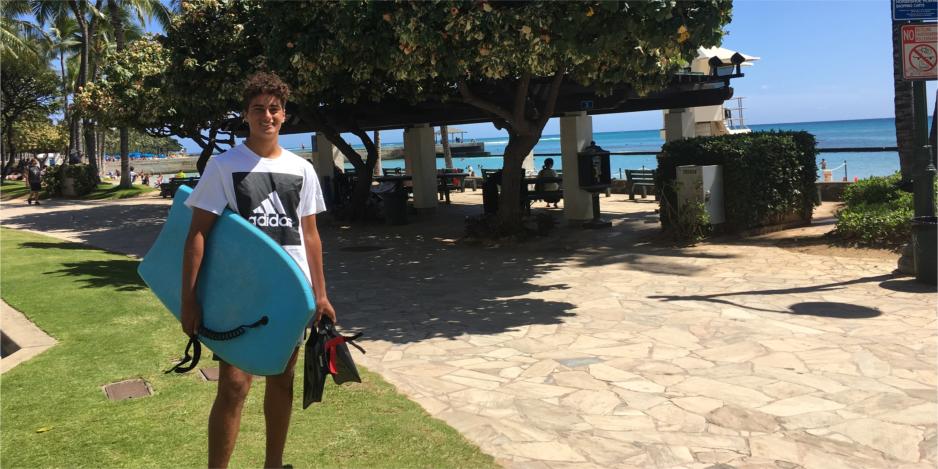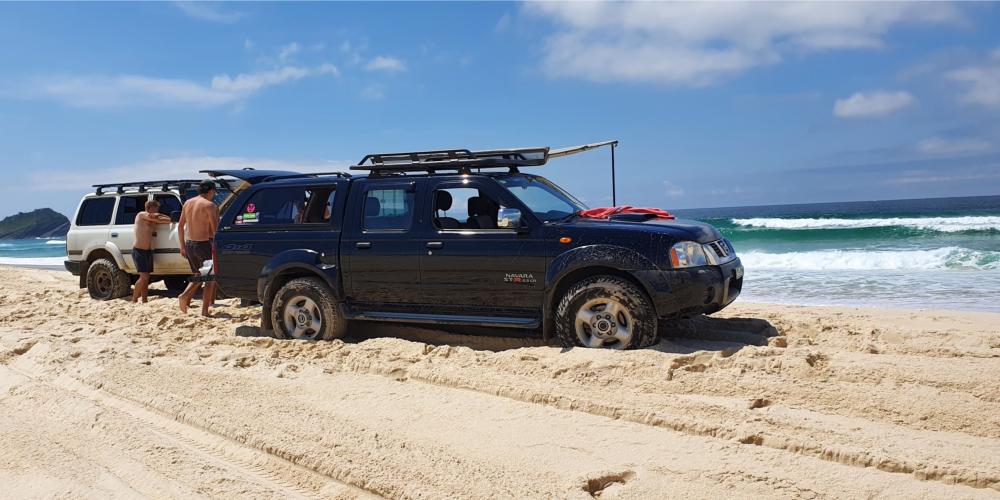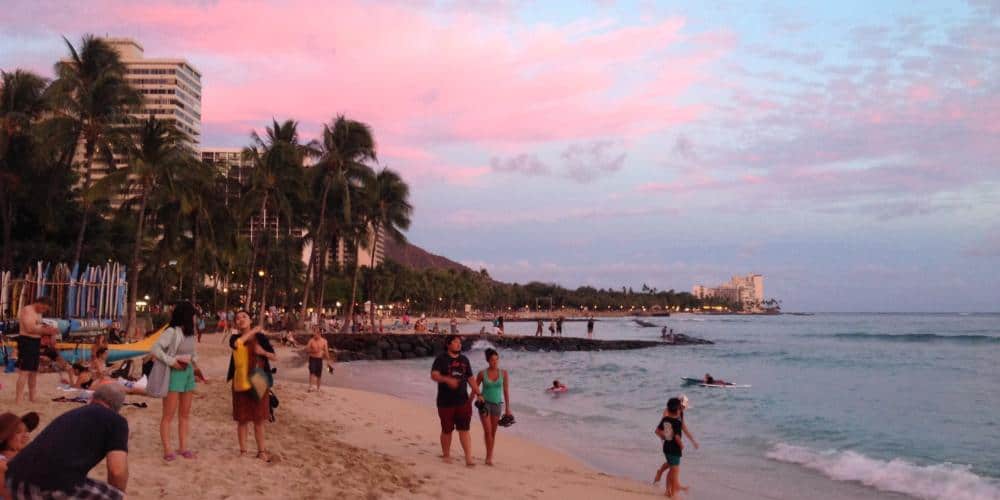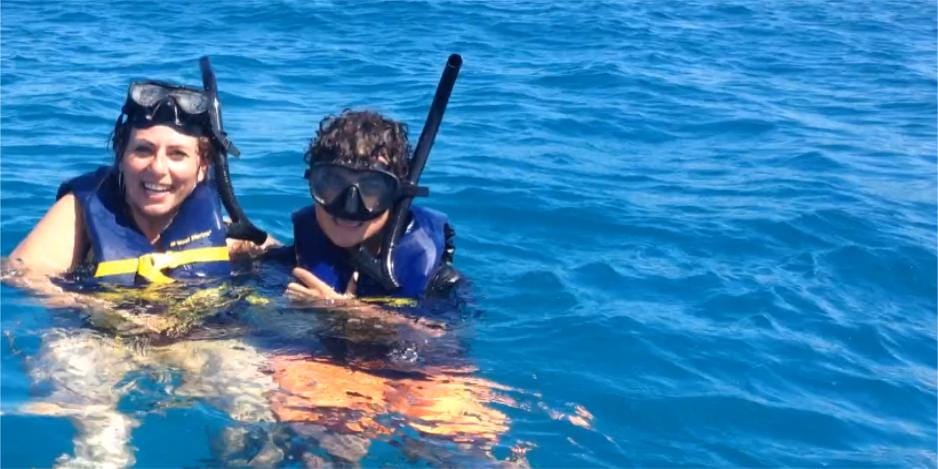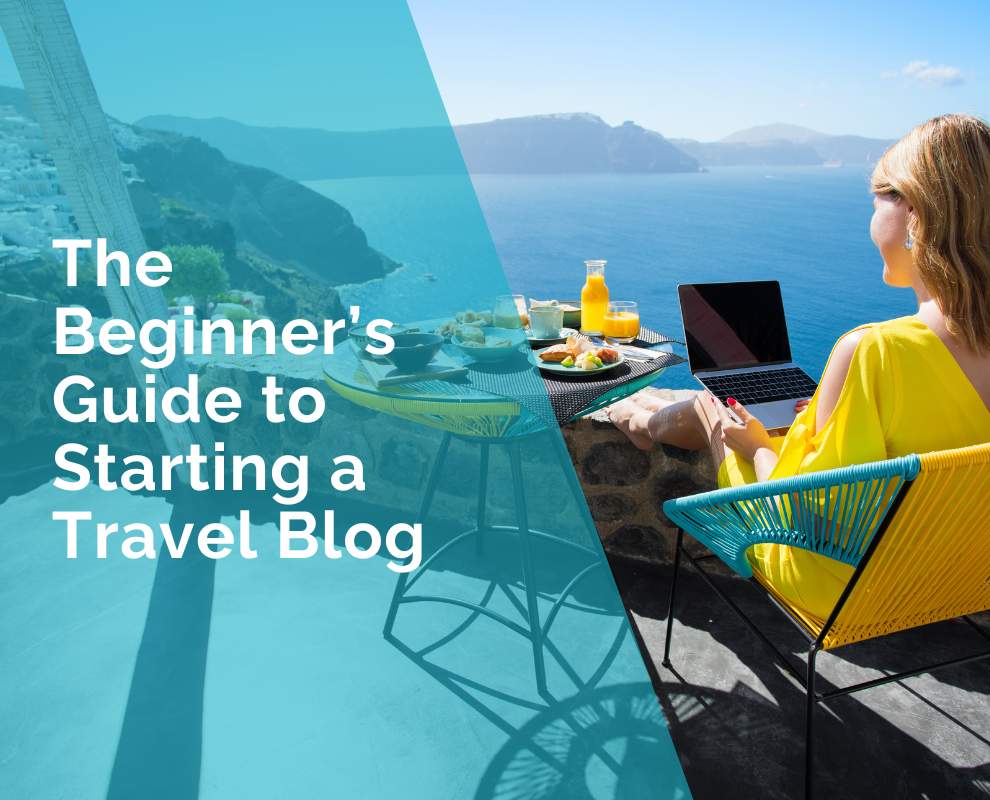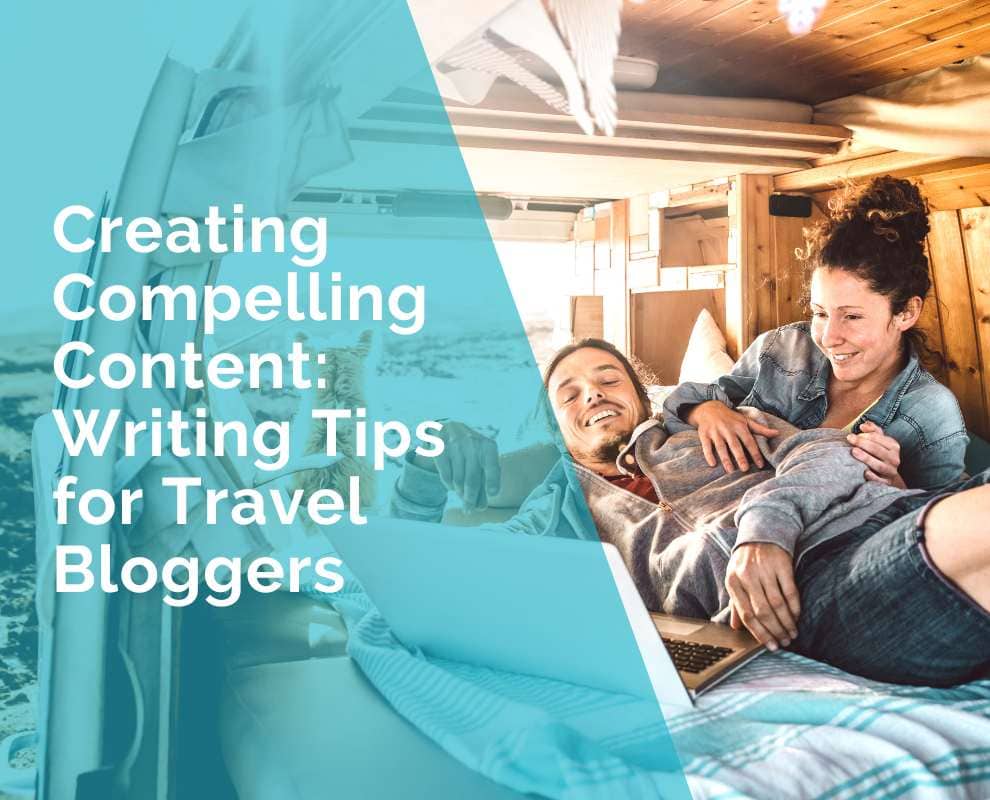10 Essential Tips for Travel Bloggers
Travel blogging has surged in popularity over recent years, becoming a vibrant niche in digital content creation. With the rise of social media platforms and accessible travel opportunities, more people are turning their adventures into captivating stories shared online.
From exploring hidden gems in bustling cities to embarking on adrenaline-pumping escapades in remote destinations, travel bloggers have captured the imaginations of millions worldwide.
Consider the case of Sarah, an avid traveller who decided to document her journeys through a travel blog. Through stunning photographs, engaging narratives, and insightful tips, she cultivated a loyal following eager to experience the world through her eyes. Sarah’s blog not only showcased her adventures but also served as a source of inspiration for others seeking to embark on their own explorations.
The following info is meant to equip you with the tools and insights needed to navigate this digital landscape. From crafting captivating narratives to maximizing your online presence, these tips for travel bloggers will empower you to share your adventures with the world while building a thriving community of fellow wanderlust enthusiasts. Let’s dive in and unlock the secrets to success in the exciting realm of travel blogging.
1. Importance of strategic planning and execution for success
While the allure of travel may seem spontaneous and carefree, successful travel blogging requires careful strategic planning and execution. From choosing the right destinations to crafting compelling content and building an engaged audience, every aspect of your blogging journey demands thoughtful consideration.
Take Mark, for example, who set out to create a travel blog focusing on sustainable tourism. By meticulously researching eco-friendly accommodations, responsible tour operators, and conservation initiatives, Mark positioned his blog as a valuable resource for environmentally conscious travelers. Through strategic partnerships and targeted outreach efforts, he not only expanded his audience but also made a positive impact on the destinations he featured.
2. Define Your Niche
Importance of niche selection in standing out in a crowded market
Choosing a niche is like finding your unique corner in a bustling marketplace. In the vast world of travel blogging, where countless voices compete for attention, defining your niche is crucial for standing out and building a dedicated audience. By focusing on a specific area of interest, you can tailor your content to meet the needs and preferences of your target audience, making it more compelling and relevant.
Imagine you’re walking through a crowded street market filled with stalls selling all kinds of goods. Amidst the sea of vendors, you notice one stand offering handmade leather bags crafted from sustainably sourced materials. This niche focus sets it apart from the generic offerings, attracting customers seeking quality and ethical products. Similarly, in the realm of travel blogging, a well-defined niche can help you carve out your place in the digital landscape and establish yourself as an authority in your chosen area.
Examples of different travel niches (luxury travel, budget travel, solo travel, adventure travel, etc.)
The world of travel offers a diverse array of experiences, and your niche should reflect your unique interests and expertise. Here are some examples of popular travel niches to inspire you:
Luxury Travel: Catering to travelers seeking exclusive experiences, luxury travel bloggers showcase lavish accommodations, fine dining experiences, and VIP services. From five-star resorts to private jet travel, this niche appeals to those with a taste for the finer things in life.
Budget Travel: Targeting budget-conscious travelers, bloggers in this niche share tips and tricks for exploring the world on a shoestring budget. From budget-friendly accommodations and transportation options to free attractions and cheap eats, they help readers maximize their travel experiences without breaking the bank.
Solo Travel: Solo travel bloggers empower individuals to embark on adventures alone, sharing their own experiences and offering advice on safety, solo-friendly destinations, and solo travel hacks. They inspire independence and self-discovery, catering to a growing demographic of solo travelers seeking meaningful experiences.
Adventure Travel: Adventure travel bloggers thrive on adrenaline-fueled experiences, from hiking treacherous trails to diving into uncharted waters. They inspire thrill-seekers with epic tales of exploration and provide valuable insights into planning adventurous journeys safely and responsibly.
Assessing personal interests and expertise to find the right niche
When selecting your niche, consider your passions, interests, and areas of expertise. Reflect on what sets your travel experiences apart and what aspects of travel excite you the most. Are you passionate about sustainable tourism, culinary adventures, cultural immersion, or off-the-beaten-path destinations?
For example, if you have a keen interest in sustainable tourism practices and environmental conservation, you might choose to focus on eco-friendly travel. By sharing tips on minimizing your ecological footprint, supporting local communities, and advocating for responsible travel practices, you can attract like-minded readers passionate about sustainable travel.
Similarly, if you have extensive knowledge of a specific region or cultural heritage, consider specializing in niche markets such as heritage travel or cultural immersion experiences. Your unique insights and expertise will resonate with readers seeking authentic and immersive travel experiences.
By aligning your niche with your personal interests and expertise, you’ll not only stand out in a crowded market but also create content that genuinely resonates with your audience, fostering deeper connections and engagement. So take some time to explore your passions and strengths, and let them guide you towards finding the perfect niche for your travel blog.
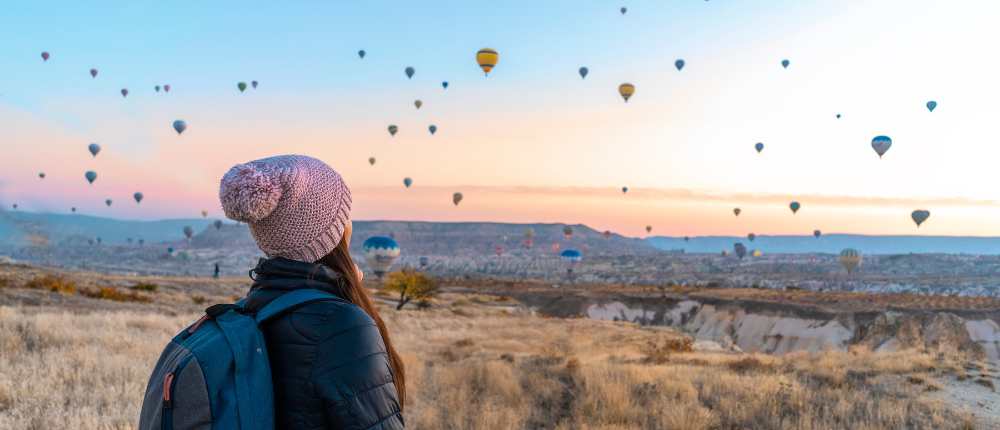
3. Create Compelling Content
Emphasize the significance of high-quality content in attracting and retaining readers
In the bustling world of travel blogging, high-quality content is your ticket to success. Just like a captivating story or a stunning photograph can transport you to another world, compelling content has the power to engage and inspire your audience. Whether you’re sharing your latest adventure or providing valuable travel tips, the quality of your content can make all the difference in attracting and retaining readers.
Consider the case of a food blogger who meticulously documents their culinary adventures around the world. Through mouthwatering descriptions, vibrant photographs, and insightful reviews, they captivate their audience and leave them craving for more. By consistently delivering high-quality content that entertains, educates, and inspires, they build a loyal following of food enthusiasts eager to follow their gastronomic journey.
Tips for crafting engaging stories, incorporating visuals, and utilizing different content formats (blogs, vlogs, podcasts, social media posts)
Crafting engaging stories is at the heart of successful travel blogging. Whether you’re recounting your latest travel escapade or sharing insider tips, storytelling adds depth and personality to your content, making it more relatable and compelling. Start by hooking your readers with a captivating introduction, setting the scene, and weaving a narrative that keeps them eagerly turning the virtual pages.
Visuals play a crucial role in capturing your audience’s attention and bringing your stories to life. From stunning photographs to captivating videos, visuals allow you to showcase the beauty and diversity of your travel experiences in vivid detail. Whether you’re snapping breathtaking landscapes, mouthwatering meals, or candid moments with locals, let your visuals speak volumes and immerse your audience in your adventures.
Experiment with different content formats to keep your audience engaged and cater to their preferences. Whether you prefer writing blog posts, creating vlogs, recording podcasts, or sharing snippets on social media, choose formats that best complement your storytelling style and resonate with your audience. Each format offers unique opportunities for creativity and connection, so don’t be afraid to mix and match to find what works best for you.
Importance of authenticity and originality in content creation
In a digital world flooded with content, authenticity and originality are your greatest assets. Your audience craves genuine experiences and unique perspectives that resonate with them on a personal level. Be true to yourself and your voice, and don’t be afraid to share your quirks, challenges, and triumphs along the way.
Take inspiration from travel bloggers who infuse their content with authenticity and originality, sharing the highs and lows of their journeys with honesty and transparency. Whether it’s embracing cultural mishaps, sharing travel fails, or opening up about personal struggles, authenticity builds trust and fosters meaningful connections with your audience.
Originality sets you apart from the crowd and leaves a lasting impression on your readers. Instead of following trends or imitating others, dare to be different and carve out your unique niche in the travel blogging sphere. Whether it’s uncovering hidden gems, exploring off-the-beaten-path destinations, or offering fresh perspectives on familiar places, let your creativity and individuality shine through in your content.
By prioritizing high-quality content, storytelling prowess, and authenticity in your travel blogging endeavours, you’ll not only attract and retain readers but also leave a lasting impact on their wanderlust-filled hearts. So channel your passion, unleash your creativity, and embark on a journey of content creation that leaves a trail of inspiration in its wake.
4. Master Social Media
Overview of the role of social media in travel blogging
Social media is your passport to success in the world of travel blogging. It’s not just a platform for sharing your adventures; it’s a powerful tool for connecting with your audience, amplifying your content, and growing your brand. From Instagram’s visually stunning feeds to Twitter’s real-time updates and Facebook’s community engagement, social media offers a diverse array of platforms to showcase your travels and engage with your audience.
Imagine social media as a bustling marketplace where travelers from around the world gather to share stories, exchange tips, and seek inspiration for their next adventure. By establishing a strong presence on social media, you can tap into this global network and reach a wider audience of fellow wanderers eager to follow in your footsteps.
Tips for building a strong social media presence (choosing the right platforms, consistency, engaging with followers)
Building a strong social media presence starts with choosing the right platforms that align with your audience and content. Consider where your target audience spends their time online and focus your efforts on platforms that resonate with them. For example, if you specialize in visual storytelling, platforms like Instagram and Pinterest may be your best bet for showcasing your travel experiences through stunning photographs and videos.
Consistency is key to maintaining a strong social media presence. Regularly update your profiles with fresh content, whether it’s sharing snapshots from your latest adventure, posting travel tips, or engaging with your audience through polls and Q&A sessions. Consistent posting not only keeps your audience engaged but also helps you stay top-of-mind and relevant in their feeds.
Engage with your followers to foster a sense of community and connection. Respond to comments, messages, and mentions promptly, and take the time to interact with your audience authentically. Ask questions, spark conversations, and encourage user-generated content to create a dynamic and engaging social media presence that keeps your followers coming back for more.
Utilizing social media for networking, collaboration, and audience growth
Social media is not just a platform for self-promotion; it’s also a valuable tool for networking, collaboration, and audience growth. Reach out to fellow travel bloggers, influencers, and brands in your niche to form mutually beneficial partnerships and collaborations. Whether it’s guest posting on each other’s blogs, co-hosting Instagram takeovers, or participating in joint giveaways, collaborations can help you expand your reach and attract new followers.
Additionally, leverage social media to engage with industry influencers, tourism boards, and travel brands for potential sponsorship opportunities and partnerships. Showcase your unique perspective and value proposition, and demonstrate how your content aligns with their brand values and target audience. By forging strategic partnerships and alliances, you can amplify your reach, gain access to exclusive opportunities, and accelerate your growth as a travel blogger.
Finally, harness the power of social media analytics and insights to track your performance, identify trends, and optimize your content strategy. Monitor key metrics such as engagement rates, reach, and audience demographics to understand what resonates with your audience and refine your approach accordingly. By staying informed and adaptive, you can continuously fine-tune your social media strategy and maximize your impact as a travel blogger.
By mastering the art of social media, you’ll not only amplify your voice and expand your reach but also forge meaningful connections, cultivate a loyal following, and unlock endless opportunities for growth and collaboration. So embrace the power of social media, and let your travels inspire and delight audiences around the globe.
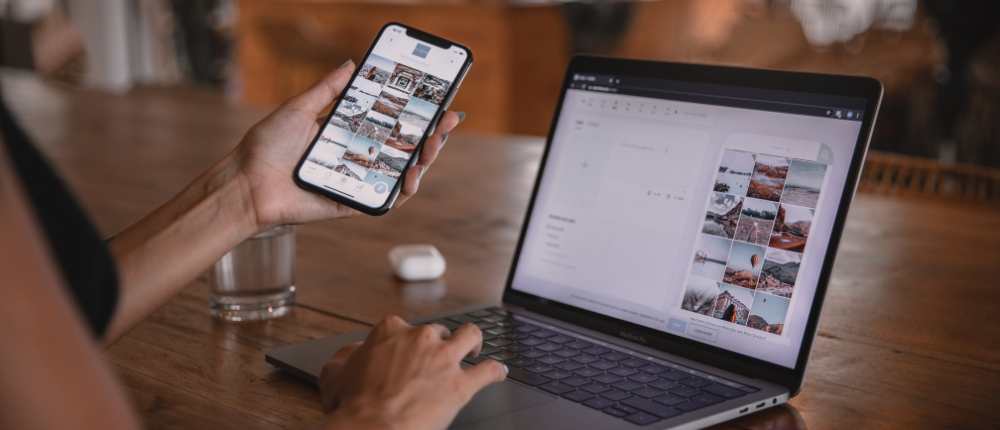
5. Invest in Professional Photography
Discuss the impact of visuals in travel blogging
In the vibrant world of travel blogging, visuals are your window to the world. Just as a picture speaks a thousand words, compelling photographs have the power to transport your audience to the breathtaking landscapes, bustling streets, and vibrant cultures you encounter on your travels. From awe-inspiring sunsets to candid moments with locals, photography adds depth, emotion, and authenticity to your storytelling, making your adventures come alive in vivid detail.
Imagine flipping through a travel magazine filled with stunning photographs of exotic destinations around the world. Each image beckons you to embark on a journey of exploration and discovery, igniting your wanderlust and inspiring your next adventure. Similarly, in the digital realm of travel blogging, captivating photography captures the imagination of your audience and invites them to experience the world through your lens.
Importance of high-quality photography and tips for improving photography skills
High-quality photography is essential for capturing the beauty and essence of your travel experiences. While you don’t need the latest and most expensive camera equipment to take stunning photographs, investing in a decent camera or smartphone with a good camera can significantly enhance the quality of your images. Experiment with composition, lighting, and perspective to create visually compelling photographs that evoke emotion and intrigue.
Consider the case of a fashion blogger who travels the world in search of unique style inspiration. Armed with a keen eye for detail and a passion for storytelling, they use photography to showcase the diversity and creativity of fashion around the globe. By mastering the art of composition, lighting, and posing, they create visually striking images that captivate their audience and elevate their brand.
To improve your photography skills, practice regularly and experiment with different techniques and settings. Learn the fundamentals of composition, such as the rule of thirds, leading lines, and framing, to create visually balanced and dynamic images. Experiment with natural light and artificial lighting to enhance the mood and atmosphere of your photographs, and don’t be afraid to step out of your comfort zone and try new perspectives and angles.
Utilizing photo editing tools and techniques for enhancing images
Photo editing tools and techniques can take your photography to the next level, allowing you to fine-tune and enhance your images for maximum impact. Whether you’re adjusting exposure, color correction, or adding creative effects, photo editing software offers a wide range of tools and features to unleash your creativity and transform ordinary photographs into extraordinary works of art.
Take inspiration from travel photographers who use photo editing tools to enhance the beauty and storytelling power of their images. From enhancing colors and contrast to removing distractions and imperfections, photo editing allows you to create visually stunning images that captivate your audience and leave a lasting impression.
Experiment with popular photo editing software such as Adobe Lightroom, Photoshop, or smartphone apps like Snapseed and VSCO to find the tools and techniques that best suit your style and preferences. Learn how to use basic editing tools such as exposure, contrast, and saturation to enhance the overall look and feel of your images, and explore more advanced features such as selective editing and presets to add a unique flair to your photographs.
By investing in professional photography and mastering the art of visual storytelling, you’ll not only elevate the quality of your travel blog but also engage and inspire your audience in meaningful ways. So grab your camera, explore the world around you, and let your photography transport your audience to new and exciting destinations they’ve only dreamed of visiting.
6. SEO and Blog Optimization
Introduction to SEO and its importance in driving organic traffic to a travel blog
Welcome to the world of SEO, your secret weapon for skyrocketing your travel blog’s visibility and attracting organic traffic. SEO, or Search Engine Optimization, is all about optimizing your website and content to rank higher in search engine results pages (SERPs). By strategically optimizing your blog posts for relevant keywords and improving your site’s overall performance, you can increase your visibility, attract more visitors, and grow your audience organically.
Imagine SEO as your travel blog’s compass, guiding potential readers to discover your content amidst the vast digital landscape. Just as travelers rely on maps and navigation tools to find their way in unfamiliar terrain, internet users turn to search engines like Google to find answers to their questions and discover new destinations. By harnessing the power of SEO, you can ensure that your travel blog appears at the top of search results when users seek travel inspiration, tips, and recommendations.
Tips for optimizing blog posts for search engines (keyword research, meta descriptions, internal linking)
Optimizing your blog posts for search engines begins with thorough keyword research. Identify relevant keywords and phrases that your target audience is likely to use when searching for travel-related topics. Tools like Google Keyword Planner, SEMrush, and Moz Keyword Explorer can help you discover popular keywords, assess their search volume and competition, and identify opportunities to rank higher in search results.
Once you’ve identified your target keywords, strategically incorporate them into your blog posts’ titles, headings, and body content. Aim for a natural and seamless integration of keywords that enhances readability and relevance without sacrificing quality. Craft compelling meta descriptions that entice users to click on your search results by summarizing your content’s value proposition and highlighting key benefits or insights.
Utilize internal linking to establish a logical and hierarchical structure within your blog and guide users to relevant content within your site. Link to related blog posts, pages, or resources that provide additional context or value to your readers, helping search engines understand the relationships between different pieces of content and improving your site’s overall navigation and user experience.
Importance of website speed, mobile optimization, and user experience
In addition to content optimization, website speed, mobile optimization, and user experience play crucial roles in SEO and blog optimization. A fast-loading website not only enhances user experience but also signals to search engines that your site is reliable and user-friendly. Optimize your website’s performance by minimizing page load times, optimizing images, and leveraging caching and compression techniques to deliver content quickly and efficiently to users.
With the rise of mobile browsing, mobile optimization is more important than ever for SEO. Ensure that your website is responsive and mobile-friendly, with a seamless user experience across different devices and screen sizes. Mobile-friendly websites not only rank higher in mobile search results but also provide a better user experience, reducing bounce rates and increasing engagement and conversions.
Focus on enhancing user experience by creating intuitive navigation, clear calls-to-action, and engaging multimedia content that keeps users on your site longer. Pay attention to factors such as site architecture, readability, and accessibility to ensure that users can easily find and consume your content, regardless of their device or browsing preferences.
By prioritizing SEO and blog optimization strategies such as keyword research, content optimization, and website performance, you’ll not only improve your travel blog’s visibility and ranking in search results but also enhance user experience and drive organic traffic to your site. So set sail on your SEO journey, and watch your travel blog soar to new heights of success in the digital landscape.

7. Build a Community
Emphasize the value of building a loyal audience and community
In the realm of travel blogging, building a community is like creating your own tribe of fellow adventurers and enthusiasts. Beyond just attracting individual readers, fostering a loyal audience and community around your blog is invaluable. It’s about creating a sense of belonging, where like-minded travelers can come together to share experiences, exchange tips, and support each other’s journeys.
Think of community-building as laying the foundation for a thriving ecosystem around your travel blog. Just as a vibrant neighborhood brings together residents with shared interests and values, your blog’s community unites travelers from around the world who share a passion for exploration and discovery. By cultivating strong relationships and fostering meaningful connections with your audience, you’ll not only enhance the overall experience of your blog but also create a loyal following that becomes your greatest advocate and asset.
Tips for engaging with readers and fostering community interaction (responding to comments, hosting meetups, creating forums)
Engaging with your readers is the cornerstone of community-building. Take the time to respond to comments on your blog posts, social media posts, and other platforms where your audience interacts with your content. Acknowledge their questions, feedback, and contributions, and foster open dialogue and conversation. By actively participating in discussions and engaging with your audience, you demonstrate that you value their input and appreciate their presence in your community.
Consider organizing meetups or events to bring your community together in real life. Whether it’s a casual coffee meetup, a group hike, or a themed travel workshop, in-person gatherings provide an opportunity for your audience to connect face-to-face and strengthen relationships beyond the digital realm. Hosting meetups not only deepens your connection with your audience but also fosters a sense of camaraderie and belonging within your community.
Create forums or online communities where your audience can connect with each other, share travel tips, and seek advice. Whether it’s a dedicated Facebook group, a subreddit, or a community forum on your website, providing a space for your audience to engage with each other fosters a sense of belonging and empowerment. Encourage members to share their own travel stories, ask questions, and support each other’s adventures, creating a vibrant and interactive community around your blog.
Leveraging community for feedback, support, and collaboration opportunities
Your community is not just a passive audience; it’s a valuable resource for feedback, support, and collaboration opportunities. Seek input and insights from your audience on topics, content ideas, and improvements for your blog. Conduct surveys, polls, or Q&A sessions to gather feedback and gauge audience preferences, and use this information to tailor your content strategy and enhance the overall experience for your community.
Tap into your community for support and encouragement during your blogging journey. Whether you’re facing challenges, celebrating milestones, or seeking advice, your audience can provide valuable support and guidance. Share your experiences, vulnerabilities, and lessons learned openly with your community, and leverage their collective wisdom and expertise to overcome obstacles and achieve your goals as a travel blogger.
Collaborate with members of your community on projects, partnerships, or content initiatives. Whether it’s featuring guest bloggers, hosting community-contributed photo contests, or organizing group travel experiences, involving your audience in collaborative endeavors not only strengthens relationships but also creates opportunities for co-creation and mutual growth. By leveraging the collective talents and resources of your community, you can take your travel blog to new heights and foster a sense of ownership and pride among your audience.
By prioritizing community-building strategies such as engaging with readers, hosting meetups, and leveraging your audience for feedback and collaboration, you’ll not only cultivate a loyal following but also create a vibrant and supportive community around your travel blog. So embrace the power of community, and watch as your blog becomes a hub of connection, inspiration, and adventure for travelers around the globe.
8. Monetization Strategies
A. Overview of different monetization avenues for travel bloggers (affiliate marketing, sponsored content, digital products, freelance writing)
Congratulations on building a successful travel blog! Now it’s time to turn your passion into profit with strategic monetization strategies. There are various avenues through which you can monetize your travel blog, each offering unique opportunities to generate income and turn your blogging endeavors into a sustainable business.
Affiliate Marketing: Affiliate marketing involves promoting products or services through affiliate links on your blog. When your readers make a purchase through these links, you earn a commission. For example, if you recommend a travel gear item and include an affiliate link to purchase it on an online retailer like Amazon, you can earn a commission for each sale generated through your link.
Sponsored Content: Sponsored content involves collaborating with brands or tourism boards to create promotional content in exchange for compensation. This could include sponsored blog posts, social media posts, or product reviews. For instance, a hotel may partner with you to write a review of their property and share it with your audience in exchange for payment or complimentary accommodation.
Digital Products: Create and sell digital products such as e-books, travel guides, photography presets, or online courses related to your niche. For example, if you specialize in adventure travel, you could create an e-book sharing your top adventure destinations or an online course on outdoor photography techniques.
Freelance Writing: Freelance writing for travel publications, websites, or other blogs can also be a lucrative monetization avenue. You can pitch article ideas or contribute guest posts to established travel publications and websites, earning a fee for your writing services.
Tips for diversifying income streams and maximizing revenue potential
Diversifying your income streams is key to maximizing your revenue potential and building a sustainable income from your travel blog. Instead of relying solely on one monetization avenue, explore multiple revenue streams to spread out your earnings and reduce dependency on any single source.
For example, if you primarily rely on affiliate marketing for income, consider diversifying by incorporating sponsored content or creating digital products to sell to your audience. By diversifying your income streams, you can mitigate risks and capitalize on various opportunities to generate revenue from your blog.
Additionally, focus on maximizing your revenue potential by optimizing your monetization efforts. Continuously evaluate and refine your strategies to identify what works best for your audience and niche. Experiment with different affiliate programs, negotiate favourable sponsorship deals and invest in creating high-value digital products that resonate with your audience.
Importance of maintaining authenticity and transparency in monetization efforts
While monetization is essential for sustaining your travel blog, maintaining authenticity and transparency should always remain your top priorities. Your audience trusts you to provide honest and unbiased recommendations, and transparency in your monetization efforts is crucial for preserving that trust.
Disclose any affiliate links or sponsored content clearly and transparently to your audience. Be upfront about any financial relationships or incentives involved in promoting products or services on your blog. Honesty builds credibility and trust with your audience, fostering long-term relationships and loyalty.
Remember that authenticity is your greatest asset as a travel blogger. Avoid promoting products or services solely for the sake of monetization if they don’t align with your values or benefit your audience. Instead, prioritize recommending products or services that genuinely enhance your readers’ travel experiences and provide value.
By diversifying your income streams, maximizing revenue potential, and maintaining authenticity and transparency in your monetization efforts, you can build a profitable and sustainable business from your travel blog while continuing to provide valuable content and experiences to your audience. So seize the opportunities available to you, and embark on your journey towards monetizing your passion for travel blogging.
9. Networking and Collaboration
Discuss the benefits of networking and collaboration in the travel blogging industry
Networking and collaboration are the secret ingredients that can take your travel blogging journey to new heights. In the dynamic world of travel blogging, forging meaningful relationships with fellow bloggers, brands, and industry professionals opens doors to exciting opportunities and accelerates your growth and success.
Think of networking as building your tribe of allies and supporters in the travel blogging community. By connecting with like-minded individuals who share your passion for travel and storytelling, you gain access to valuable insights, resources, and support that can help you navigate the challenges and opportunities of the blogging landscape.
Collaboration, on the other hand, is the art of teamwork and partnership. Collaborating with brands, fellow bloggers, or tourism boards allows you to leverage collective strengths, expand your reach, and create compelling content that resonates with your audience and drives engagement. Whether it’s co-creating content, hosting joint events, or participating in influencer campaigns, collaboration amplifies your impact and opens doors to new opportunities for growth and exposure.
Tips for building relationships with other bloggers, brands, and industry professionals
Building relationships with other bloggers, brands, and industry professionals requires genuine effort, authenticity, and a spirit of reciprocity. Start by actively engaging with fellow bloggers and influencers on social media, attending industry events and conferences, and participating in online communities and forums related to travel blogging.
When reaching out to brands or industry professionals, personalize your communications and demonstrate your genuine interest in their work or products. Whether it’s sending a personalized email pitch, connecting on social media, or attending networking events, make an effort to establish rapport and build trust with potential collaborators.
Offer value and support to your network by sharing their content, promoting their products or services, or offering to collaborate on projects that align with your mutual interests and goals. By nurturing genuine relationships based on trust, respect, and mutual benefit, you lay the foundation for fruitful collaborations and long-term partnerships in the travel blogging industry.
Collaborative opportunities such as guest posting, joint projects, and influencer campaigns
Collaborative opportunities abound in the travel blogging industry, offering endless possibilities for creative partnership and synergy. Explore collaborative opportunities such as:
Guest Posting: Contribute guest posts to other travel blogs or websites in your niche to expand your reach and showcase your expertise to a new audience. Similarly, invite fellow bloggers to guest post on your blog, providing fresh perspectives and diverse insights to your audience.
Joint Projects: Collaborate with fellow bloggers or brands on joint projects such as e-books, webinars, or podcast episodes. Pool your resources, expertise, and creativity to create valuable content that resonates with your audience and drives engagement.
Influencer Campaigns: Partner with brands, tourism boards, or travel companies on influencer campaigns to promote their products, destinations, or services to your audience. Whether it’s sponsored content, brand ambassadorships, or sponsored trips, influencer campaigns offer opportunities to monetize your blog and collaborate with brands you admire.
By embracing networking and collaboration as integral parts of your travel blogging journey, you unlock a world of possibilities for growth, learning, and creativity. Cultivate meaningful relationships with fellow bloggers, brands, and industry professionals, and embrace collaborative opportunities that align with your values and goals. Together, you’ll create memorable experiences, inspire your audience, and make a lasting impact in the vibrant world of travel blogging.
10. Stay Persistent and Patient
Address the challenges and setbacks faced by aspiring travel bloggers
As an aspiring travel blogger, you’re embarking on an exciting journey filled with adventure, discovery, and endless possibilities. However, along the way, you’re bound to encounter challenges and setbacks that may test your resolve and determination.
From writer’s block and creative burnout to fluctuating website traffic and income instability, the road to success in the competitive world of travel blogging is paved with obstacles. You may face rejection from brands, struggle to grow your audience, or grapple with self-doubt and imposter syndrome.
Consider the journey of a budding entrepreneur launching a new business venture. Despite their passion and vision, they encounter numerous hurdles along the way, from securing funding and navigating regulatory hurdles to building a customer base and scaling their operations. Despite these challenges, they persevere, adapt, and learn from setbacks, ultimately achieving success through persistence and resilience.
Similarly, as an aspiring travel blogger, you’ll encounter setbacks and obstacles that may test your patience and determination. It’s essential to recognize these challenges as part of the journey and embrace them as opportunities for growth and learning.
Importance of perseverance, resilience, and continuous learning
Perseverance, resilience, and continuous learning are the cornerstones of success in the ever-evolving landscape of travel blogging. When faced with challenges and setbacks, it’s easy to become discouraged and lose sight of your goals. However, it’s during these moments of adversity that your perseverance and resilience are put to the test.
Consider the story of a professional athlete training for a major competition. Despite setbacks, injuries, and setbacks, they remain steadfast in their commitment to their goals, pushing through pain and obstacles with unwavering determination. Through perseverance and resilience, they overcome challenges, refine their skills, and achieve greatness on the field.
Similarly, as a travel blogger, it’s essential to cultivate a mindset of perseverance and resilience in the face of adversity. Embrace setbacks as learning opportunities, adapt to changing circumstances, and remain focused on your long-term vision and goals. Approach challenges with a growth mindset, viewing failures as stepping stones to success rather than roadblocks to be avoided.
Continuous learning is also key to staying ahead in the competitive landscape of travel blogging. Keep abreast of industry trends, best practices, and emerging technologies, and invest in developing your skills and expertise. Whether it’s honing your writing skills, mastering photography techniques, or learning about SEO and digital marketing, commit to lifelong learning and self-improvement to stay relevant and competitive in the ever-evolving world of travel blogging.
Encouragement to stay committed to the journey despite obstacles
Despite the challenges and setbacks you may encounter on your journey as an aspiring travel blogger, remember that every obstacle is an opportunity for growth and transformation. Stay committed to your passion, stay focused on your goals, and stay persistent in the face of adversity.
Take inspiration from the countless success stories of travel bloggers who have overcome challenges, persevered through setbacks, and achieved their dreams through sheer determination and resilience. Whether it’s building a loyal audience, landing coveted brand partnerships, or turning their passion for travel into a thriving business, their journeys serve as a testament to the power of persistence and patience.
Above all, believe in yourself and your ability to overcome any obstacle that comes your way. Trust in the process, embrace the journey, and celebrate every small victory along the way. Remember that success is not defined by the absence of challenges, but by your ability to overcome them with grace, resilience, and unwavering determination.
So stay persistent and patient, keep pushing forward, and never lose sight of the incredible potential that lies ahead on your journey as a travel blogger. With perseverance, resilience, and a steadfast commitment to your dreams, you’ll conquer any challenge that comes your way and emerge stronger, wiser, and more resilient than ever before.
The world of travel blogging offers boundless opportunities for exploration, creativity, and growth. As you embark on your journey as a travel blogger, remember to define your niche, create compelling content, master social media, and embrace monetization strategies while staying persistent and patient in the face of challenges. By building a loyal community, networking with fellow bloggers and brands, and staying committed to your passion for travel and storytelling, you’ll navigate the ups and downs of the blogging landscape with resilience and determination. With perseverance, continuous learning, and an unwavering belief in your abilities, you’ll not only realize your dreams of becoming a successful travel blogger but also inspire and empower others to embark on their own adventures and pursue their passions. So go forth, explore the world, share your stories, and make your mark on the vibrant tapestry of travel blogging.
 ***
***
Ivana Katz is a Sydney based website designer and travel blogger. Having her own business has given her the freedom to explore the world. She believes travel is the best teacher and her passion for adventure, writing and photography has taken her and her son to some amazing places, including Hawaii, Canada, Fiji, Greece and Czech Republic. Ivana’s favourite thing about travelling is learning, discovering hidden gems and creating memories. She loves nothing more than inspiring other women to chase their dreams and explore the world with their families and friends.
Frequently Asked Questions
What is a travel blog niche, and why is it important?
A travel blog niche is a specific focus or topic within the broader travel genre. It could be anything from luxury travel to budget travel, solo travel, adventure travel, or even niche topics like sustainable travel or food tourism. Choosing a niche is crucial because it helps you stand out in a crowded market, attract a targeted audience interested in your particular area of expertise, and differentiate yourself from other travel bloggers.
How do I find my niche as a travel blogger?
Finding your niche involves assessing your personal interests, passions, and expertise, as well as considering market demand and competition. Start by identifying topics or aspects of travel that you’re genuinely passionate about and have knowledge or experience in. Consider your unique perspective, interests, and strengths, and research potential niches to gauge their popularity and potential for growth.
What are the essential elements of a successful travel blog post?
A successful travel blog post typically includes engaging storytelling, high-quality photography or visuals, practical tips or advice, and a personal touch that reflects your unique voice and perspective. Start by hooking your readers with a compelling introduction, share your personal experiences and insights, and provide practical information that adds value to your audience. Incorporate visually appealing images or multimedia elements to enhance the reader’s experience and make your content more engaging and shareable.
How can I grow my audience as a new travel blogger?
Growing your audience as a new travel blogger requires consistency, engagement, and promotion. Start by consistently publishing high-quality content that resonates with your target audience and showcases your unique perspective and expertise. Engage with your audience through social media, respond to comments and messages, and actively participate in travel-related communities and forums to increase your visibility and attract new followers. Promote your blog through social media, email newsletters, collaborations with other bloggers, and SEO optimization to reach a wider audience and drive traffic to your site.
What are some effective strategies for monetizing my travel blog?
Monetizing your travel blog can be achieved through various avenues, including affiliate marketing, sponsored content, digital products, and freelance writing. Affiliate marketing involves promoting products or services and earning a commission for sales generated through your referral links. Sponsored content entails collaborating with brands or tourism boards to create promotional content in exchange for compensation. You can also create and sell digital products such as e-books, photography presets, or online courses related to your niche, or offer freelance writing services to travel publications and websites.
How can I effectively use social media to promote my travel blog?
Social media is a powerful tool for promoting your travel blog and connecting with your audience. Start by choosing the right social media platforms that align with your target audience and content strategy, such as Instagram, Facebook, Twitter, or Pinterest. Create engaging and visually appealing content that showcases your travel experiences and encourages interaction and sharing. Use hashtags strategically to increase your reach and visibility, and engage with your audience by responding to comments, asking questions, and sharing user-generated content. Collaborate with other bloggers, brands, and influencers to amplify your reach and attract new followers.
What are some common SEO techniques for optimizing my travel blog?
SEO (Search Engine Optimization) techniques for optimizing your travel blog include keyword research, on-page optimization, and link building. Conduct keyword research to identify relevant keywords and phrases related to your niche and target audience, and strategically incorporate them into your blog posts, titles, headings, and meta descriptions. Optimize your website’s structure, navigation, and page speed to improve user experience and search engine rankings. Build backlinks from reputable websites and directories to increase your site’s authority and visibility in search results.
How can I stay inspired and avoid burnout as a travel blogger?
Staying inspired and avoiding burnout as a travel blogger involves prioritizing self-care, setting realistic goals, and maintaining a healthy work-life balance. Take breaks when needed, disconnect from work and technology, and engage in activities that recharge and rejuvenate you. Set achievable goals and milestones for your blog, and celebrate your successes along the way. Seek inspiration from other travel bloggers, explore new destinations, and embrace new experiences to keep your creativity and passion alive.
What are some legal considerations for travel bloggers, such as copyright and disclosure requirements?
As a travel blogger, it’s essential to familiarize yourself with legal considerations such as copyright laws, disclosure requirements, and privacy regulations. Respect copyright laws by obtaining permission or using only licensed images and content in your blog posts. Disclose any relationships or incentives related to sponsored content, affiliate marketing, or product endorsements in compliance with FTC guidelines and other regulatory requirements. Protect your own content and intellectual property by using watermarks, copyright notices, and terms of use on your website.
How can I collaborate with brands and tourism boards as a travel blogger?
Collaborating with brands and tourism boards as a travel blogger involves building relationships, demonstrating value, and negotiating mutually beneficial partnerships. Start by researching brands and destinations that align with your niche and target audience, and reach out with personalized pitches or proposals highlighting your expertise and the benefits of collaborating with you. Showcase your previous work, audience demographics, and engagement metrics to demonstrate your reach and influence. Be transparent and professional in your communications, and negotiate terms and expectations upfront to ensure a successful collaboration.
What are some effective strategies for networking with other travel bloggers and industry professionals?
Networking with other travel bloggers and industry professionals can open doors to collaboration opportunities, mentorship, and valuable connections. Attend travel blogging conferences, workshops, and meetups to meet fellow bloggers and industry professionals in person. Join online communities, forums, and social media groups dedicated to travel blogging to connect with like-minded individuals and share insights and experiences. Engage with other bloggers by commenting on their posts, sharing their content, and offering support and encouragement. Collaborate on joint projects, guest posts, or social media campaigns to strengthen relationships and expand your network.
How can I leverage my travel blog to create additional income streams beyond traditional monetization methods?
Beyond traditional monetization methods like affiliate marketing and sponsored content, you can leverage your travel blog to create additional income streams through various avenues. Consider offering services such as travel consulting, itinerary planning, or photography workshops based on your expertise and experience. Monetize your blog’s traffic by selling advertising space or sponsored listings on your website. Explore opportunities for public speaking engagements, brand ambassadorships, or hosting travel-related events or workshops. By diversifying your income streams and leveraging your expertise, you can maximize your earning potential as a travel blogger.
What are some tips for balancing travel blogging with a full-time job or other commitments?
Balancing travel blogging with a full-time job or other commitments requires effective time management, prioritization, and discipline. Set realistic goals and expectations for your blog based on your available time and resources, and prioritize tasks that align with your long-term goals. Create a content calendar and schedule dedicated time for writing, editing, and promoting your blog posts. Delegate tasks or outsource certain aspects of your blog, such as design or social media management, to free up time and focus on higher-priority activities. Communicate openly and set boundaries with your employer, family, and friends to ensure that your blogging activities don’t interfere with your other commitments.
How can I overcome writer’s block and maintain a consistent posting schedule on my travel blog?
Overcoming writer’s block and maintaining a consistent posting schedule on your travel blog requires creativity, discipline, and effective planning. Start by brainstorming ideas and topics in advance to avoid last-minute stress and pressure. Create an editorial calendar or schedule to organize your content ideas and plan your blog posts ahead of time. Break down larger tasks into smaller, manageable steps, and set deadlines or milestones to track your progress and stay on track. Incorporate different types of content, such as travel guides, personal stories, and destination highlights, to keep your blog fresh and engaging. If you’re experiencing writer’s block, take a break, engage in activities that inspire you, and return to your writing with a refreshed perspective.
How can I measure the success and effectiveness of my travel blog?
Measuring the success and effectiveness of your travel blog involves tracking key performance indicators (KPIs), analyzing data, and evaluating your progress towards your goals. Monitor metrics such as website traffic, engagement, social media followers, and email subscribers to gauge the reach and impact of your blog. Track conversions, such as affiliate sales, product purchases, or leads generated, to assess the effectiveness of your monetization efforts. Use tools like Google Analytics, social media analytics, and email marketing platforms to gather insights into audience behavior and preferences. Regularly review your performance against your goals and objectives, and adjust your strategies accordingly to optimize your blog’s success and growth.

